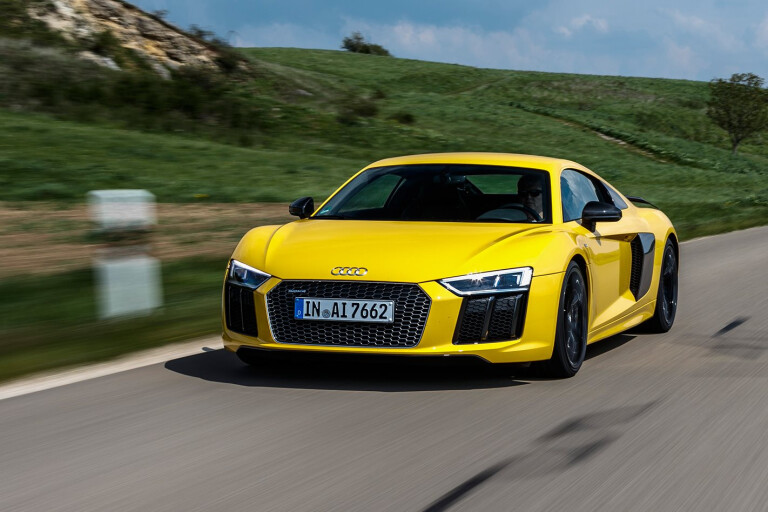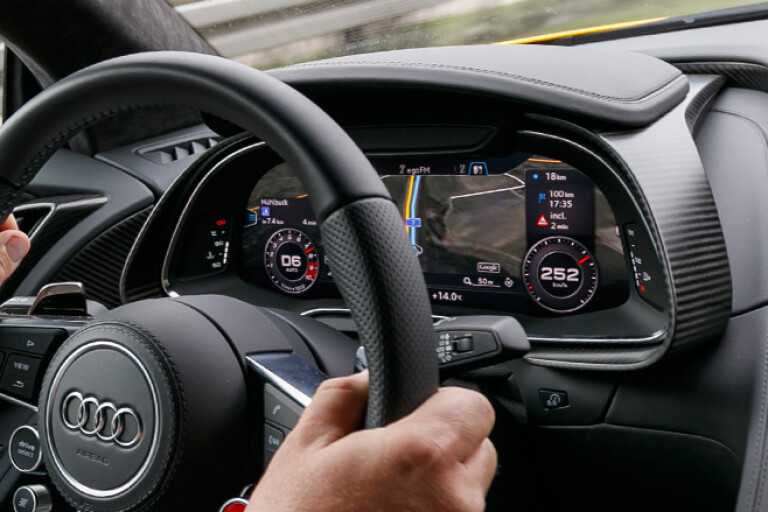
There’s something very un-Australian about flooring the accelerator at 150km/h and seeing it tick towards the double ton. It’s just not something done Down Under, at least not on a multi-lane freeway.
But it’s an everyday part of driving for millions of Germans who rely on the 13,000km of often speed derestricted autobahns for getting around.
As the speedo winds past 200km/h – or, at least, the digital speedo being projected directly into my line of sight in my Audi RS7 – the concentration levels increase exponentially.
It’s both hands on the wheel and maximum attention on the task at hand. Very different, in other words, to the lackadaisical one-handed driving style it’s so easy to slip into on some of Australia’s ridiculously slow freeways (Hume Highway, we’re looking at you!).
And the sound of the engine – in this case a beefy twin-turbocharged V8 – is getting drowned out by the rush of wind that intensifies with every additional kilometre an hour.
The steering has more weight, too, part of a deliberate move by engineers to ensure every tiny input from the driver doesn’t translate into a car unsettled by a sudden shift in momentum.
Indeed that’s one of the most important parts of high speed driving: ensuring you’re not making sudden lane changes or swerves. At this speed everything is stressed and it takes longer to make any changes; tyres run hotter and the car wants to keep travelling at whatever speed you’re doing in whatever direction you’re travelling.

At 250km/h, for example, you’re covering almost 70 metres every second – almost 1.5 Olympic swimming pools in the click of a finger.
So you need to be looking ahead, in some cases a kilometre or more.
Braking distances quadruple when you double your speed, so the 40-odd metre stopping distances from 100km/h increase to around 160m at 200km/h. At 250km/h you’re looking at at least 250m to pull the car up – and that’s if you apply maximum braking from the moment you touch the pedal.
Indeed, brakes become a big part of the equation when the scenery is shooting past as quick as it is.
European drivers generally have very good lane discipline, so they regularly use their mirrors to monitor other traffic and only use the fast (outside) lane when they’re going fast.
But a car travelling at 130km/h may misjudge or not expect another car to arrive at almost double the speed.
So it’s up to the faster driver to plan ahead, and it’s crucial to factor in potential mistakes from other cars.
If you suspect something could go wrong, it pays to get on the brakes sooner, giving cars behind more time to react – and you a better chance of stopping in time.
When it all works – and it generally does – it’s a fantastic way to get somewhere quickly. Autobahns are safe and a great way to move a lot of cars effectively.
But expect to use more fuel doing it. Any car travelling upwards of 200km/h needs plenty of power to push all the air out of the way. That drag takes an enormous toll on fuel consumption, and it’s not unusual to use upwards of 20 litres per 100km when travelling briskly.
COMMENTS